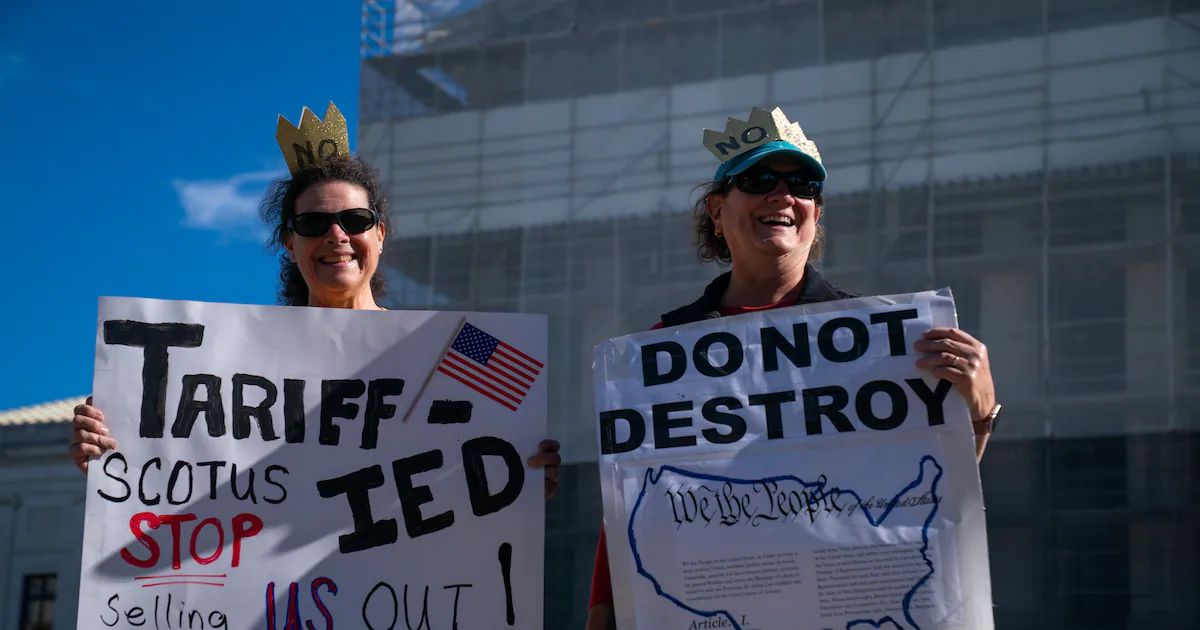Copyright Anchorage Daily News

The Trump administration told the Supreme Court on Wednesday that raising government revenue is not the purpose of the emergency tariffs that President Donald Trump imposed this year on all imported goods. Though the president has repeatedly boasted that the government is making a “fortune” from his new import taxes, Solicitor General D. John Sauer denied that the tariffs are equivalent to a tax and said they would work best if they were never paid. “These are regulatory tariffs. They are not revenue-raising tariffs. The fact that they raise revenue is only incidental. The tariffs would be most effective, so to speak, if no person ever paid them,” he told the justices. The distinction is important. The business groups challenging the president’s emergency tariffs say that under the Constitution, only Congress can impose taxes. Three lower courts have agreed to varying degrees. A final verdict rests with the nation’s highest court. “The administration’s insistence that these are ‘regulatory tariffs’ rather than ‘revenue-raising’ ones is designed to obscure that only Congress has authority to impose revenue-raising measures,” said John Veroneau, a veteran trade lawyer. Sauer’s comments were striking because for months the president has repeatedly celebrated the revenue gained from the 10 percent universal tariff he has imposed on all foreign goods and the higher levies he has applied to products from specific nations including China, Mexico, Vietnam and Canada. “We’re making a fortune. We are taking in hundreds of billions of dollars,” Trump said this summer, referring to his false claim that foreigners pay the fees. Likewise, Treasury Secretary Scott Bessent has said it would be “terrible” if the court ordered the administration to refund some or all of the emergency tariffs it has collected. Through August, the government collected nearly $90 billion from U.S. importers via the tariffs that were imposed under the International Emergency Economic Powers Act (IEEPA), and that are at issue in the cases the Supreme Court heard Wednesday. If the court strikes down the emergency tariffs and orders the government to issue refunds, the companies that are parties to the lawsuits will get refunds, said Neal Katyal, the attorney representing one of the small businesses suing the government. Other importers might need to navigate a cumbersome administrative procedure to obtain repayment. “It seems to me like it could be a mess,” said Justice Amy Coney Barrett. Administration officials have spoken publicly of using the gusher of tariff payments to address a number of priorities, including deficit reduction and a planned multibillion-dollar bailout for farmers suffering lost sales amid the president’s trade war. In July, Trump even floated drawing on tariff revenue to send taxpayers a “rebate,” an idea that received a cool reception from his congressional allies. The administration’s presentation before the justices reflected a tension over the tariffs’ goals that analysts have long noted. The president at various times has said that his tariffs are intended to promote greater domestic manufacturing; punish other nations for unfair trade practices; achieve unrelated foreign policy goals, such as persuading other countries to accept deported migrants; and fill a hole in the nation’s fiscal accounts. In its brief filed with the court, the administration highlighted a recent Congressional Budget Office assessment of the tariffs’ budgetary impact. “Vitally, the Congressional Budget Office recently projected that the IEEPA tariffs will reduce the national deficit by $4 trillion in upcoming years,” the administration said. If the court invalidated the emergency tariffs, the national debt in 2035 would be $2.6 trillion higher, including interest costs, according to the nonpartisan Committee for a Responsible Federal Budget. Sauer drew pointed questioning from Justice Sonia Sotomayor when he repeated that the tariffs would be “most effective” if no one ever paid them. “If nobody ever pays the tariffs,” he said, “and instead Americans direct their consumption towards American producers and stimulate the rebuilding of our hollowed-out manufacturing base, then the policy’s by far the most effective.” Sotomayor interrupted to ask why, if the president wanted to reduce imports to zero, he did not impose an embargo on foreign goods, which both sides agreed the law permits. Jennifer Hillman, an expert on trade law at Georgetown Law School, said she was surprised by the administration’s argument. “If the best outcome is no imports, then why not impose an embargo? The fact that Trump never even considers an embargo is because tariffs raise revenue. I don’t think the justices were terribly persuaded by the argument,” Hillman wrote in an email. Chief Justice John G. Roberts Jr. also challenged Sauer on the question of who pays U.S. tariffs. The president has repeatedly, and falsely, said that foreign nations pay them. In fact, the U.S. importer of record is responsible for paying U.S. Customs and Border Protection once its goods reach an American port. Sauer said the ultimate burden is shared among foreign manufacturers, U.S. importers and American consumers, with estimates of the cost absorbed by Americans ranging from “30 percent to 80 percent.” Economists at Goldman Sachs last month said American businesses and consumers will absorb 77 percent of the tariffs, while foreign exporters will eat 18 percent and 5 percent will be evaded. Businesses that have been stung by rising tariff bills were puzzled by the administration’s comments. “Revenue certainly appears to be a feature of the administration’s tariff policies, and those costs are being borne by increasingly distressed American businesses and consumers,” said Jake Colvin, president of the National Foreign Trade Council, which represents companies such as Walmart, Procter & Gamble and IBM.



